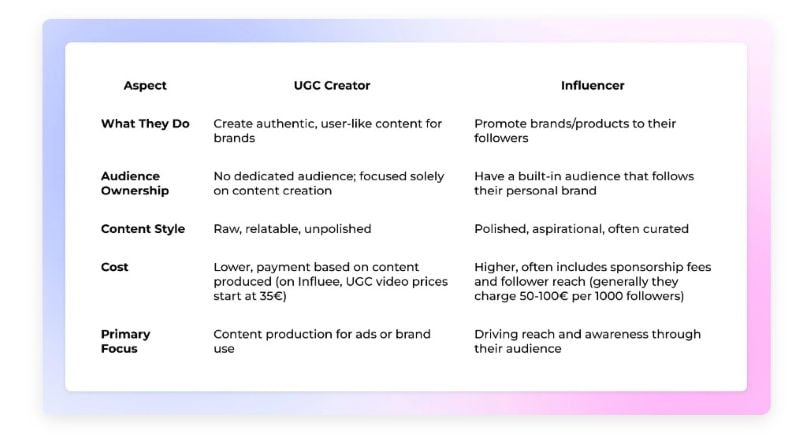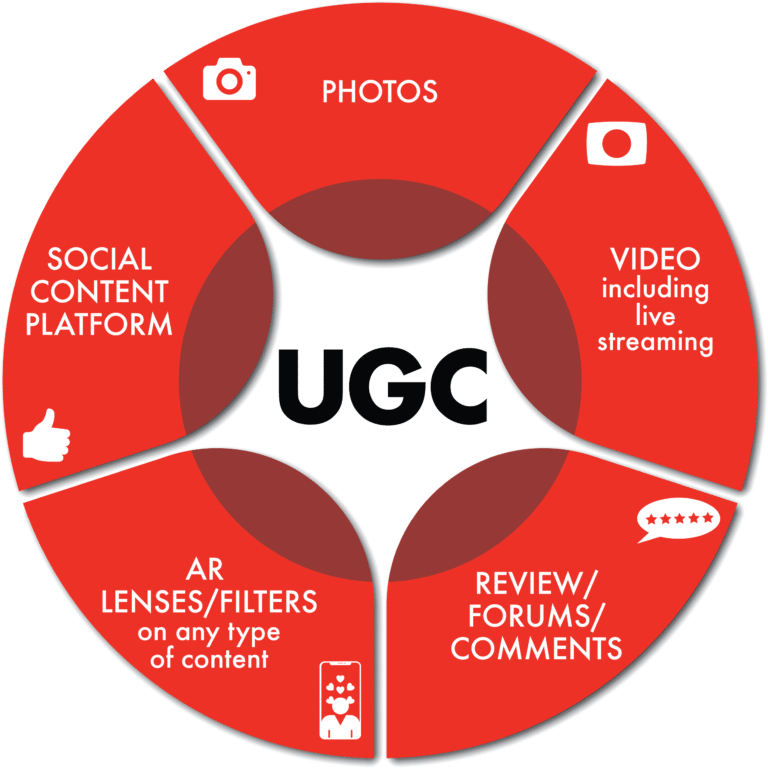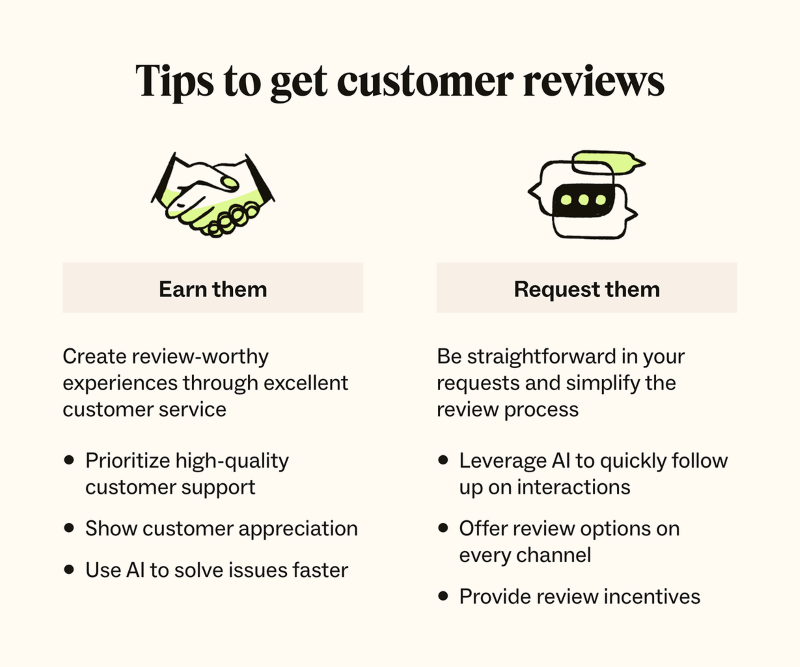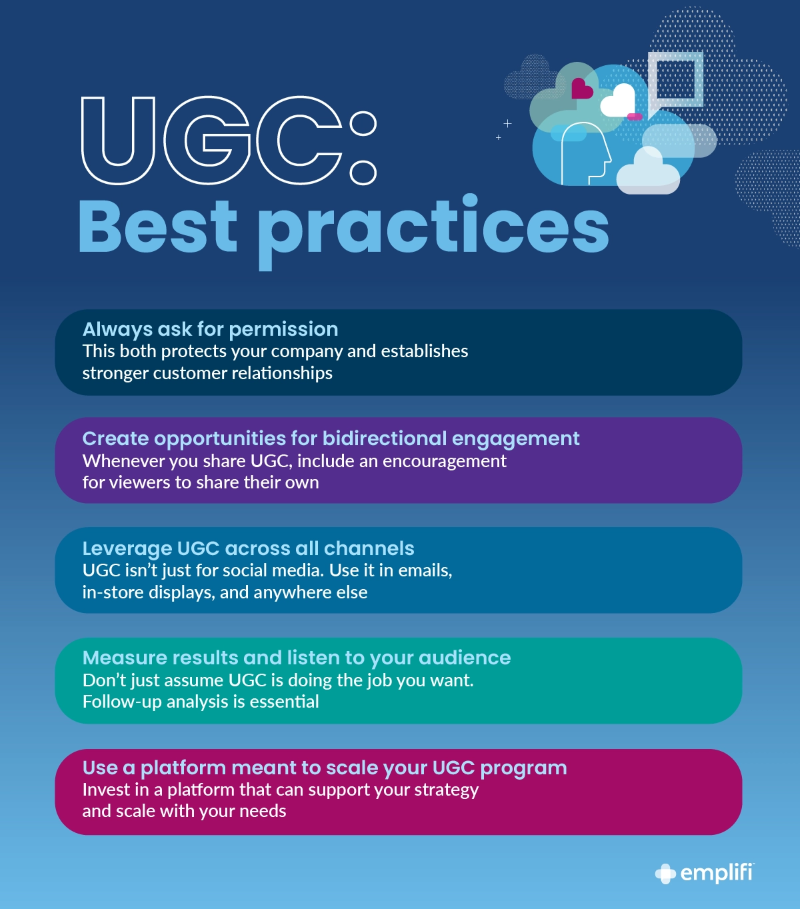In a world where attention is fleeting and trust in brands is at an all-time low, there’s one form of content that continues to cut through the noise: user-generated content (UGC). In fact, 92% of consumers trust recommendations from others—even strangers—over branded content.
UGC marketing taps into the power of that trust. It’s not just a trend—it’s a fundamental shift in how businesses connect with modern audiences.
In this ultimate guide, I’ll cover the following:
- What UGC marketing is (and how it differs from influencer marketing)
- The many benefits of user-generated content
- Real-world UGC examples from brands like GoPro, Lululemon, and Glossier
- 17 proven strategies to make UGC work for your business
- Best practices, tools, and platform-specific tips to scale your marketing efforts
What Is UGC Marketing?
UGC marketing refers to the strategic use of content created by your customers, fans, or audience—rather than your internal team—to market your brand. It could be an Instagram photo showing off a new outfit, a TikTok review, or a blog post describing someone’s experience with your software.
Unlike traditional branded content, user-generated content is perceived as authentic, relatable, and trustworthy—and that’s why it performs so well.
How is UGC Marketing Different from Influencer Marketing?

It’s easy to confuse UGC with influencer marketing—but there are important distinctions.
- Influencer marketing is usually paid and contractual: a brand collaborates with an influencer who shares content with their own followers.
- UGC, on the other hand, is often organic, unpaid, or lightly incentivized, and it may be shared directly by the user on their own account, or by the brand on its channels (with permission, of course).
That said, UGC and influencer content can work hand-in-hand—especially when influencer partnerships are structured to encourage authentic storytelling.
Enter: The UGC Creator
The rise of UGC creators—individuals who produce content for brands but don’t necessarily post it on their own channels—has blurred the lines between influencer marketing and UGC. These creators offer affordable, native-style content that can be used in paid ads, on websites, and across social media platforms. UGC creators are especially valuable for brands just starting out or testing new content formats.
UGC Works for B2C and B2B
Although UGC is often associated with consumer brands, it’s just as powerful in B2B. Case studies, video testimonials, and client success stories are all forms of user-generated content that help build trust and shorten the sales cycle.
Whether you sell yoga pants or SaaS subscriptions, your customers’ voices are your most powerful marketing tool.
The Many Benefits of UGC Marketing

Why are more marketers doubling down on UGC? Because it delivers results across the board. Here’s what makes UGC such a powerful tool in 2025 and beyond:
Authenticity and Trust
Let’s face it—customers are skeptical of polished, overly produced content. UGC cuts through the noise with genuine stories, reactions, and experiences from real people. This authenticity builds trust, and trust drives conversions.
Cost-Effective Content Production
Creating high-quality branded content is expensive. With UGC, your customers do the heavy lifting—often for free, or in exchange for simple incentives like recognition, discounts, or a chance to be featured.
It’s one of the most scalable and budget-friendly content strategies available today.
Builds Community and Loyalty
Encouraging UGC shows your customers that you value their voice. Featuring their content creates a sense of belonging and turns one-time buyers into long-term brand advocates.
Increases Engagement and Conversions
UGC often outperforms branded content in terms of likes, comments, shares—and most importantly, purchases. In fact, UGC-powered campaigns see a 29% boost in web conversions on average.
SEO and Algorithm Boost
UGC feeds social media algorithms with fresh, engaging content and boosts your visibility across platforms. It also adds relevant, keyword-rich content to your website—especially when customer reviews or case studies are published on product pages or blogs.
Social Proof at Scale
Consumers want validation before buying. UGC serves as scalable, on-demand social proof—helping potential customers feel confident in choosing your brand.
7 Popular Types of UGC

User-generated content can take many forms, each with its own unique applications. Understanding the different types of UGC will help you decide what to encourage, collect, and leverage across your marketing channels.
1. Customer Reviews and Testimonials
Customer feedback is one of the most trusted and effective forms of UGC. Reviews, testimonials, and star ratings influence potential buyers, especially when featured on your website, product pages, or social channels.
Is Your LinkedIn Working?
Just released: my new book to help professionals, entrepreneurs, and business owners maximize LinkedIn for real growth.
With years of LinkedIn expertise, Maximizing LinkedIn for Business Growth offers actionable steps to build your brand, expand your network, and drive results.
Start leveraging LinkedIn like never before—grab your copy now! Click the cover or button below to buy on Amazon.
Further Reading: What is User Generated Content? The Definitive Guide to Leverage UGC for Marketing
2. Photos and Videos
Visual UGC—such as selfies, unboxings, or product demos—helps potential customers visualize using your product in real life. These visual content assets are easy to share and repurpose across social media channels and advertising.
3. Social Media Posts
Whether it’s a simple mention or a full-fledged post, social media content often forms the core of modern UGC marketing. Reposts, shares, and hashtags allow brands to amplify this content quickly and widely.
4. Hashtag Campaigns
Branded hashtags encourage users to join a movement or conversation. When executed well, hashtag campaigns can generate thousands of pieces of content and help you track brand sentiment across platforms.
5. Case Studies
Particularly effective in B2B marketing, case studies showcase customer success stories and demonstrate product or service value in depth. While often created in collaboration with clients, they still qualify as user-generated when the story is told from the customer’s perspective.
6. Employee-Generated Content
Your internal team members can be powerful UGC contributors. Their behind-the-scenes posts, thought leadership, and day-in-the-life content humanize your brand and build trust—especially on platforms like LinkedIn.
7. UGC Creators (Paid or Organic)
Some users create content specifically for brands, either organically or through compensation. These UGC creators deliver authentic-looking content that can be repurposed for paid ads, landing pages, and social feeds—without the cost of traditional influencer partnerships.
17 UGC Marketing Strategies to Grow Your Business in 2025
No matter what types of UGC you’re working with, there are countless ways to integrate this content into your marketing. Here are 17 UGC marketing strategies you can use to build trust, increase conversion rates, and grow your audience.
1. Encourage Customer Reviews and Testimonials

Reviews provide powerful social proof and help potential customers choose between options. Ask for feedback through email campaigns, thank-you pages, or purchase follow-ups. Display positive reviews prominently on your site and social channels.
How to collect and showcase testimonials:
Use branded hashtags, encourage online reviews on platforms like Google or Yelp, and create a dedicated testimonial page on your website. You can also feature testimonials in email marketing or on product landing pages.
2. Leverage Influencer Marketing
Influencer content often overlaps with UGC—especially when it feels natural and unscripted. Partner with influencers who align with your brand and speak authentically to your target audience. Be sure their content feels native to the platform and invites engagement.
3. Create and Promote Hashtag Campaigns
Launch a branded hashtag to encourage social media users to post content related to a product or campaign. This helps you track submissions, grow reach, and foster community.
Examples: Coca-Cola’s #ShareACoke and Always’ #LikeAGirl successfully encouraged participation while reinforcing brand values.
4. Curate and Share User-Generated Content
Use branded hashtags or social listening tools to discover and repurpose customer content. Sharing this content shows appreciation, builds trust, and inspires others to join the conversation.
platFurther Reading: 17 UGC Marketing Strategies to Generate More Sales in 2025
5. Utilize User-Generated Videos
Video content is highly engaging and memorable, but expensive to produce in-house. Encourage your audience to create videos using your products by offering incentives or hosting contests. Short-form content works especially well on TikTok and Instagram Reels.
6. Build and Nurture Online Communities
Create spaces—on Facebook, Discord, Slack, or LinkedIn—where your customers can connect with each other and your brand. When you foster meaningful relationships, UGC naturally follows.
7. Appoint Brand Ambassadors
Identify loyal customers with strong social followings and turn them into long-term advocates. Brand ambassadors create content, spread the word, and serve as trusted voices in your niche.
8. Encourage Social Media Posts from Customers
Prompt customers to share their real experiences on social with the right hashtags and calls-to-action. Offer incentives or feature their content as motivation to participate.
9. Showcase User-Generated Blog Posts
Feature long-form UGC such as guest blogs or case studies. Offer exposure, backlinks, or social sharing in exchange for valuable content from users who love your brand.
10. Utilize Consumer-Generated Product Reviews
Encourage and promote honest reviews. These can be featured on your site, in your advertising, or in organic social content. Make it easy for users to leave reviews by linking directly to platforms or forms.
11. Optimize Social Media Channels for UGC
Tailor your approach to the platform: branded hashtags for Instagram, creator duets on TikTok, and professional testimonials on LinkedIn. Build a presence where your customers naturally hang out and create content.
12. Create and Share Original Content Alongside UGC
Balance your UGC strategy with original branded content to maintain voice and direction. A consistent calendar with a blend of formats helps build brand equity while showcasing community voices.
Further Reading: How to Never Run Out of Social Media Content Ideas: The Ultimate Guide
13. Encourage Consumer-Generated Content in Various Forms
Offer flexibility. Some users are more comfortable with photos, others prefer writing or video. Make space for different content types and reward contributions appropriately.
14. Share Fresh Content from Happy Customers
Monitor hashtags and mentions regularly. Sharing recent experiences shows your brand is active, appreciated, and responsive. It also keeps your social feeds fresh.
15. Utilize Social Proof in Marketing Campaigns
Integrate UGC into ads, landing pages, and email campaigns. Seeing real customers using your product builds credibility and reduces purchase hesitation.
16. Integrate UGC into All of Your Digital Marketing Strategies
From SEO and PPC to email and influencer campaigns, UGC can enrich nearly every channel. Repurpose top-performing content across touchpoints to maximize value.
17. Foster Customer Loyalty Through UGC
Show your appreciation for content creators. Whether through discounts, recognition, or re-sharing, acknowledging their contribution keeps your community engaged and loyal.
UGC Platform-Specific Tips
Not all social platforms are created equal. The types of UGC you source, the formats that perform best, and how you engage with users can vary widely by channel. Here’s how to tailor your UGC marketing strategy for each major platform.
This is the epicenter of visual UGC. Leverage Stories, Reels, and the main feed to share customer photos and videos. Use branded hashtags to collect submissions and repost content with permission. Make use of Instagram Highlights to archive and showcase UGC permanently.
TikTok
TikTok thrives on short-form, native video. UGC on TikTok is fast-paced, casual, and community-driven. Encourage content through challenges, audio trends, or creator duets. Be ready to respond in real time and share customer-created videos across your own feed.
For B2B brands, LinkedIn is ideal for case studies, professional testimonials, and employee-generated content. Focus on thought leadership, team culture, and customer success stories that feel authentic and professionally relevant.
YouTube
Longer-form UGC like product tutorials, testimonials, unboxings, or review videos can perform well here. Encourage satisfied customers to document their experiences and build playlists of the best submissions.
Blogs, Email, and Your Website
UGC doesn’t only live on social media. Embed product reviews, feature customer quotes in email campaigns, and display case studies or photo galleries on landing pages. These assets enhance trust and drive conversions at every stage of the funnel.
UGC Best Practices

As you integrate UGC into your marketing, following a few simple guidelines can protect your brand, show respect to creators, and maximize results.
Always Get Permission
Before reposting user-generated content, ask for permission—even if the content features your brand and uses your hashtag. You can do this by commenting on the post or messaging the creator directly. In some cases, a clear opt-in policy for branded hashtags may be appropriate.
Credit the Original Creator
Recognition is essential. Always credit the user when you share their content by tagging them and including their name or handle in the caption. It’s respectful, builds goodwill, and encourages further participation.
Further Reading: What is a UGC Creator? And How Do I Become One?
Be Clear About What Content You Want
Let your community know exactly what type of content you’re looking for. Want product photos? Tutorials? Reviews? A clear ask increases the chances that users will create content that aligns with your needs—and improves quality overall.
Use Branded Hashtags
Hashtags help you categorize and find UGC easily. Promote your branded hashtag everywhere—on your packaging, website, email signature, and social bios. Make sure users know their content may be featured if they use the tag.
Leverage Employee Advocacy
Your team members are often your most passionate ambassadors. Encourage them to share company culture moments, behind-the-scenes posts, or product insights. These contributions humanize your brand and often generate strong engagement—especially on LinkedIn.
Repurpose for Multiple Channels
One great piece of UGC can serve many purposes. Share it across Instagram and LinkedIn, feature it in your newsletter, embed it on your site, or even adapt it for paid advertising. Always tailor it to the format and audience of each channel.
UGC Tools
The internet moves fast. Fortunately, there are several tools to help you discover, organize, and repurpose UGC at scale—saving you time and helping you stay compliant.
Tint
Tint helps you collect, curate, and display UGC across your digital properties. It pulls content from hashtags, mentions, and tags, and includes tools for rights management, content moderation, and performance tracking.
Later
Originally a social scheduling tool, Later now includes powerful UGC discovery features—allowing you to find and collect Instagram UGC via hashtags, mentions, or tagged content, and then schedule approved posts directly from the platform.
Yotpo
Yotpo focuses on reviews, loyalty, and visual UGC. It integrates directly with your eCommerce store to collect customer reviews, photos, and Q&A content—ideal for turning product pages into high-converting assets.
Emplifi (formerly Pixlee)
Emplifi’s UGC platform helps brands source, manage, and display authentic content across digital campaigns and web pages. It offers UGC rights management and allows you to create shoppable galleries, boosting engagement and conversions.
Sprout Social
Sprout is a robust platform that allows you to track social mentions, analyze audience sentiment, and monitor branded hashtags. It’s especially helpful for large brands that need to manage multiple profiles or community managers.
Further Reading: The Top 13 UGC Platforms to Empower Your Content Marketing in 2025
Hootsuite
Known for social scheduling, Hootsuite also enables UGC discovery and social listening. With integrations for rights management, it helps you stay legally protected while sourcing great content from your audience.
UGC Success Stories
To help you visualize the impact of UGC marketing, here are several real-world examples of how top brands have successfully leveraged user-generated content.
GoPro
As a brand built around content creation, GoPro turns its customers into its best marketers. The brand encourages users to share their adventures using branded hashtags, and repurposes this content across its YouTube channel, social media, and advertising. GoPro even runs an awards program to incentivize top-tier UGC creation.
Lululemon
Lululemon’s #thesweatlife campaign invited customers to post fitness moments while wearing the brand’s activewear. This community-driven campaign resulted in high volumes of content, deeper brand affinity, and increased visibility across key demographics.
Chipotle
With its #PeopleOfChipotle initiative, the brand empowered employees to share their experiences at work. This campaign humanized the company, strengthened employer branding, and generated wide-reaching UGC with minimal production cost.
Airbnb
By encouraging guests to share their travel experiences using specific hashtags, Airbnb filled its social feeds with aspirational and authentic stories. These posts serve as powerful social proof while showcasing properties around the world.
La Croix
To stand out in the crowded sparkling water space, La Croix meets its fans in-person and online, encouraging photos and stories using its distinctive cans. The result is a loyal following and a community of health-conscious, brand-aligned consumers.
These examples highlight what’s possible when you tap into the creativity and enthusiasm of your audience.
Conclusion
UGC marketing isn’t just a trend—it’s one of the most scalable and authentic ways to grow your brand in today’s digital landscape. From reducing content costs to increasing conversions and brand trust, the benefits of user-generated content are clear.
Whether you’re running a small business or managing enterprise-level campaigns, the key is consistency: encourage participation, engage with your audience, and build systems that make UGC part of your broader marketing strategy.
By following the strategies and best practices outlined here, you’ll not only strengthen your brand presence—you’ll empower your customers to help tell your story.










